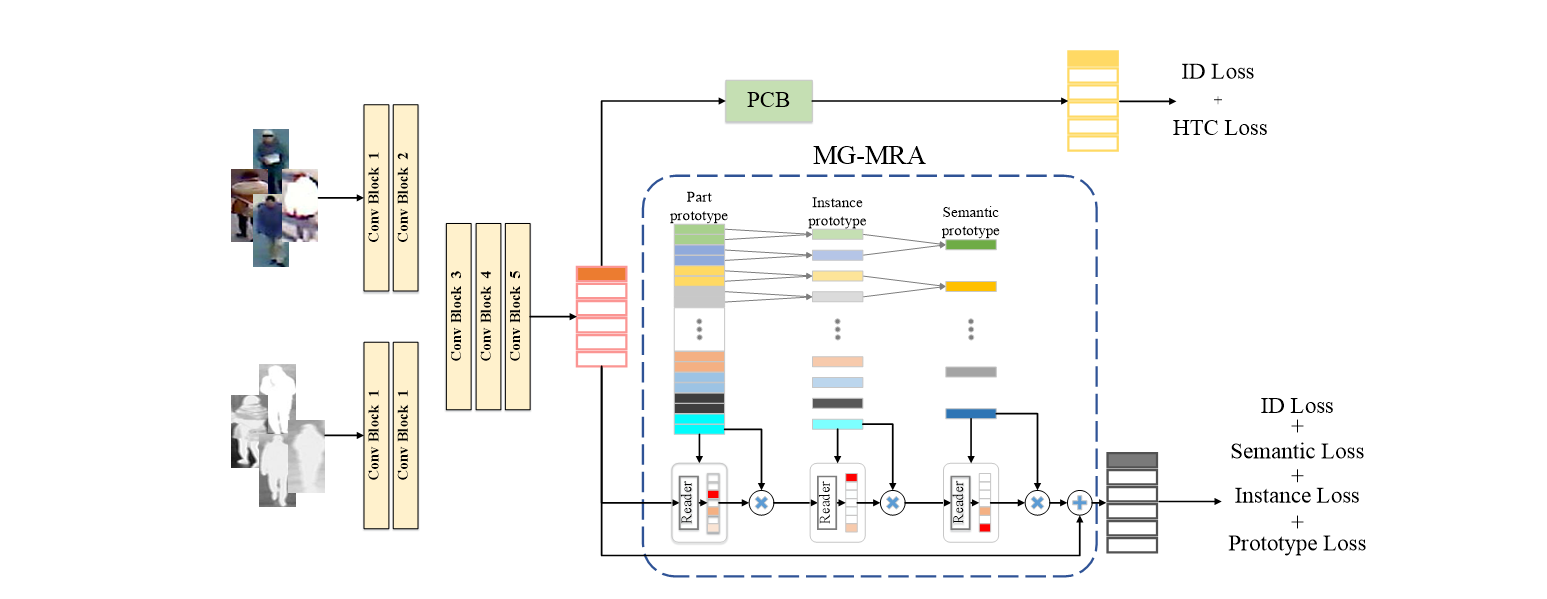Memory Regulation and Alignment toward Generalizer RGB-Infrared Person
The domain shift, coming from unneglectable modality gap and non-overlapped identity classes between training and test sets, is a major issue of RGB-Infrared person re-identification. A key to tackle the inherent issue -- domain shift -- is to enforce the data distributions of the two domains to be similar. However, RGB-IR ReID always demands discriminative features, leading to over-rely feature sensitivity of seen classes, \textit{e.g.}, via attention-based feature alignment or metric learning. Therefore, predicting the unseen query category from predefined training classes may not be accurate and leads to a sub-optimal adversarial gradient. In this paper, we uncover it in a more explainable way and propose a novel multi-granularity memory regulation and alignment module (MG-MRA) to solve this issue. By explicitly incorporating a latent variable attribute, from fine-grained to coarse semantic granularity, into intermediate features, our method could alleviate the over-confidence of the model about discriminative features of seen classes. Moreover, instead of matching discriminative features by traversing nearest neighbor, sparse attributes, \textit{i.e.}, global structural pattern, are recollected with respect to features and assigned to measure pair-wise image similarity in hashing. Extensive experiments on RegDB \cite{RegDB} and SYSU-MM01 \cite{SYSU} show the superiority of the proposed method that outperforms existing state-of-the-art methods. Our code is available in https://github.com/Chenfeng1271/MGMRA.
PDF Abstract




 ImageNet
ImageNet
 SYSU-MM01
SYSU-MM01